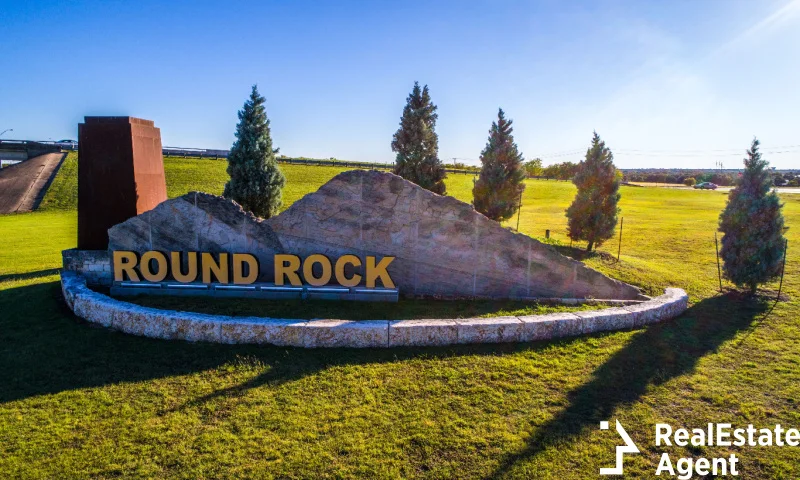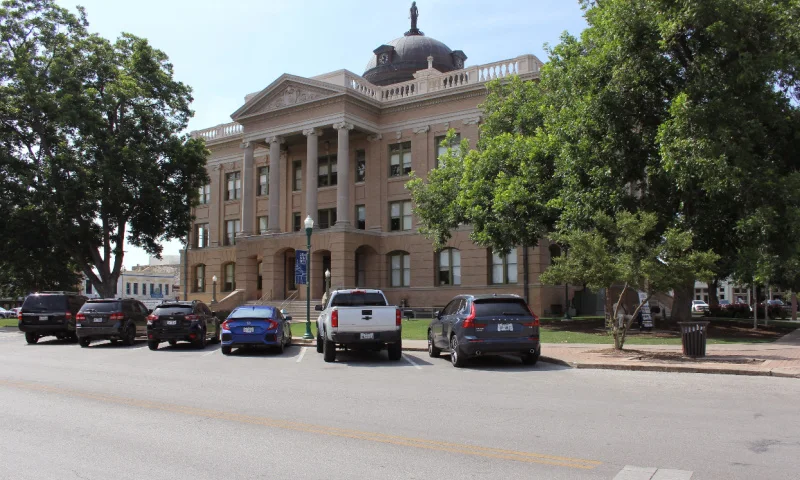“The moon hangs low, casting a spooky glow on the abandoned buildings of the deserted town. The wind howls through broken windows. Shutters bang against aged wood. A cold breeze sweeps down the main street, stirring up tumbleweeds. Old buildings are dressed in dust and sand. Lo! There’s movement at the corner! A hungry coyote runs across the street, hunting for its prey. Its eyes briefly catch the moonlight before it disappears into an alley.”
Do you believe this is a scene from a movie? It can be your recollection of a ghastly night spent in one of the ghost towns in Arizona. When we discuss deserted towns in the United States, a strange fascination takes hold of everyone. They’re the remnants of a once-thriving civilization left behind to fade away. Do the souls of the dead still linger on searching for their hometown’s former glory?
Table of Contents
- Let’s saddle up to uncover spooky abandoned towns in Arizona!
- Discover the fascinating history of deserted towns in Arizona!
- Can you buy a ghost town in Arizona?
Let’s saddle up to uncover spooky abandoned towns in Arizona!
How did they become some of The Grand Canyon State’s trendiest tourist attractions? What lies behind their fall? Can you actually purchase abandoned towns in Arizona or contribute to their reconstruction? If you’re as intrigued as I am, let’s embark on this road trip and explore Arizona’s top five preserved abandoned towns! And remember! Real estate agents in Arizona can help you acquire information on any of these places!
Arizona is the sixth largest state by surface area, but 42% of its territory is covered by coppery sand and cacti. Despite all the dryness and heat, about 7.280 million people (as of 2024) try to build their own oasis of well-being here. Over the years, though, in their perpetual search, they’ve left behind quite a few settlements in Arizona. Undeniably, the best ghost towns in Arizona make the most exhilarating hidden gems.
Shrunk, but still remembered!
Did you know that Arizona hosts approximately 300 nearly empty towns? Many of these settlements have been reduced to dust. Not all abandoned towns are entirely lifeless, though. Some are still inhabited by resilient locals who feel a deep affection for their hometown.
Most of the cities have the typical Old West look and feel. In Goldfield, AZ (recently known as Youngberg), the stores and restaurants seem to be open at any moment. Some abandoned towns have a caretaker (such as volunteers, historical societies, private owners, or even government organizations) who looks after them from time to time.
Discover the fascinating history of deserted towns in Arizona!
Many of Arizona’s deserted towns were founded during the mining boom in the 19th century. Folks from all walks of life, like miners, merchants, and (yes!) even outlaws, flocked to these spots. After all, silver and gold were too much of a temptation. Towns like Jerome and Bisbee quickly rose from rags to riches. They turned from quiet patches of desert into crowded territories, alive with miners hoping to get rich.
Life in these towns was tough, no sugarcoating it. The work was backbreaking, the days long, and there were few comforts. But the sense of community kept spirits high. Saloons, general stores, and occasional schools turned up. By all means, these establishments formed the backbone of these towns.
The end of an era
As quickly as the boom came, many towns experienced a rapid decline. Once the mines tapped out, the jobs dried up. Folks started drifting away, seeking Arizona’s greener lands. The elements weren’t kind, either. Harsh winds and the unforgiving sun gradually wore down the bustling streets. In exchange, the present-day, quiet, deserted towns took their place.
Take Oatman, for example! Today, it’s more famous for its wild burros roaming the streets than its gold mines. Or Ruby, an isolated spot near the Mexican border, where you can still see the old jail and the remnants of the schoolhouse.
1.Jerome is the billion-dollar copper camp.
High on Cleopatra Hill, you’ll find Jerome, a once-thriving copper mining town. Founded in 1876, Jerome’s population exploded to nearly 15,000 by the early 20th century. But the mines dried up, and so did the city. Don’t worry, though! By 2024, Jerome has transformed from an abandoned town to a popular tourist spot. Note that Jerome’s population counts merely 460 residents!
First, I recommend visiting Jerome State Historic Park, a fashionable tourist attraction that displays vintage photographs, minerals, and artifacts. As I walked through, the town revealed old buildings that now host charming art galleries, such as the Jerome Artists Cooperative Gallery, and quaint cafes.
I particularly enjoyed visiting history-packed museums like the “Gold King Mine Museum and Ghost Town” and the Jerome Historical Society Mine Museum. Once in town, you simply can’t skip Ghost Town Tours to learn more about Jerome’s mind-bending history!
2.Oatman is where the Wild West lives on.
Are you a fan of old Western traditions? Do you also like out-of-the-ordinary filming locations? If so, Oatman (population 145 in 2024) should be your number one destination. Several famous movies were produced here, such as “How the West Was Won” and “Edge of Eternity.”
Find Oatman in the heart of the Black Mountains in Mohave County! This former mining camp became famous in the early 1900s when gold was found. It’s best known now for its wild donkeys, which freely roam the streets. Did you know they are descendants of the burros brought here by gold miners?
The town still embraces its Gold Rush theme with staged gunfights performed by the Oatman Ghost Rider Gunfighters in the middle of Route 66! Old West-style saloons and peculiar shops, like the Gold Rush Candy Shoppe, await tourists. I urge you to see the Oatman Mine Museum, where you can see a shaft up close and personal!
3.Meet Bisbee, an incredible destination with a colorful past!
Without a doubt, Bisbee (population 5.090 in 2024) is one of Arizona’s most overlooked destinations. Find this charming town in the Mule Mountains! Bisbee emerged in the late 1800s when miners discovered rich copper, gold, and silver deposits. It once boasted a population of over 25,000 people. As mining declined, Bisbee became a haven for artists and free spirits. Folks enchanted by its Victorian architecture and steep, windy streets flocked to Bisbee.
Why don’t you hop on one of the Queen Mine Tours? You’ll see how the town has become a vibrant hub of culture, with museums (the Bisbee Restoration Museum), galleries (the Sam Poe Gallery), street art, and Downtown shops exuding an old-world charm.
Are you up for some scares? Then, you must embark on the Historic Ghost Tour, which presents Bisbee’s most macabre spots! In this regard, our fantastic town can put even the scariest ghost towns of America to shame!
4.Tombstone is a town too tough to die.
We can’t compile a list of the best ghost towns in Arizona without mentioning Tombstone (population 1,316 in Q1 2024) in Cochise County. You must have heard about the legendary Gunfight at the O.K. Corral, right? Well, the iconic showdown between Sheriff Virgil Earp and the outlaws called The Cowboys occurred in this southeastern Arizona gem! Tombstone offers a slice of pie from the Wild West history like no other place.
One of the most prominent empty settlements in the United States had its fair share of mining busts, fires, and other calamities. Still, it had put up a decent fight for survival. Moreover, by 2024, it has become an incredible tourist attraction featuring reenactments, haunted tours, and historic landmarks.
I was fascinated by The Birdcage Theater, where I could clearly sense the presence of old spirits. Then, I visited Tombstone Courthouse State Park, one of the best-preserved museums in Arizona. For a genuinely spine-tingling experience, I highly recommend taking the Goodenough Mine Tour.
5.Ruby must be Arizona’s most preserved ghost town.
For a peek into an undisturbed deserted town, Ruby is your ticket. This former mining settlement in Santa Cruz County, near the Mexican border, is one of the best-preserved ghost towns in the United States. Ruby is famous for its rich lead, zinc, and silver deposits. However, you must know that Ruby is now a private property. Thus, you must make an appointment if you wish to visit it.
Seeing this tiny town’s old houses, the playground, the school, mine workings, and machinery took me back to simpler yet more romantic times. Why don’t you try it out?
Can you buy a ghost town in Arizona?
Would you like to rescue an empty settlement in Arizona and turn it into a new tourist destination? Well, you can buy one! However, very few of them are privately owned. These towns mostly became desolate when local mines closed, and residents moved away. Sometimes, the Bureau of Land Management may sell lots that contain former mines or deserted settlements. Nevertheless, all buyers must do their homework to identify the most valuable lots before buying.
Suppose you see potential and know how to take advantage of a place’s history. You can market that knowledge in a way that attracts sightseers, turning this adventure into a profitable business. Moreover, you can become the mayor of your own abandoned town!
A breakdown of how you can purchase an entire (or parts of) ghost town in Arizona
Buying an empty settlement is similar to buying any other piece of real estate, but it has a few twists and turns.
- The thrilling adventure begins with scouting for ghost towns in the United States that are up for sale. Websites (Zillow, LoopNet, etc.) specializing in unusual real estate listings are an excellent place to start. Monitor real estate auctions and public sales of government property! You can contact historical societies or state preservation offices that might know about towns or properties for sale.
- Check the legality! You can’t just buy abandoned towns in Arizona randomly. Some might be on government land, or there might be restrictions. You’ll first need to check with local government agencies to understand what’s up for grabs.
- Take charge and assess the property! It’s crucial to inspect the town personally. Scrutinize the conditions of the structures, access to utilities, and overall safety. Watch out for red flags during the inspection!
- Get the right help! I suggest engaging a real estate agent with experience dealing with such unique properties.
- Close the deal! Buying an abandoned town involves negotiations, paperwork, and tons of money. So, you must have your finances under control, just like when buying your first home!
- Reach out to forest services! A deserted town can be located within or near a national forest. Thus, forest services may be involved in managing access to these areas. They provide information and ensure historic site preservation. Once you own a “deadsville” or part of it, you must contact them for a detailed update on how to proceed with your property.
Forest services are essential to site preservation.
Here are some examples of forest services that can be involved in managing nearly deserted towns in Arizona:
- This forest service on Coconino National Forest manages a large portion of northern Arizona. This area includes several towns with few residents, such as Jerome.
- Tonto National Forest is another forest service that manages abandoned towns in Arizona, including Ruby.
Examples of tiny ghost towns in Arizona becoming private property
Some privately owned deserted towns can be listed for sale. For instance, the unincorporated community of Wikieup, AZ, 139 miles north of Phoenix, the capital of Arizona, was on the market for $3.94 million in 2021. It included 71.66 acres of land, a considerable portion of this lovely community.
Consider the town of Cleator, Arizona, which has only eight residents! This old mining town was listed for $1.25 million a few years ago. The deal offered the buyer the land and the ruins. It also provided a working bar and opportunities for growth through tourism and themed events. Finally, Cleator was sold for $956,000 in 2022.
Conclusion
Do you still believe these “empty” towns are abandoned? My visit to the best ghost towns in Arizona reassured me that these places would never disappear, even if fewer people lived there. On the one hand, lately, there’s been an intent to revitalize and invest in these towns. Numbers speak louder than words. They draw more and more tourists yearly who want to discover and relive a genuine slice of the Old West.
Under such circumstances, investing in an empty settlement and owning a piece of history can be a highly profitable project. With the right vision and influx of money, abandoned towns in Arizona can be turned into trendy retreats, affordable spa resorts, historical sites, or unique residential areas. However, I must also address the cons of buying a (property in) an almost completely abandoned settlement. You must pay attention to infrastructural challenges, the initial weighty investment, and the asset’s limited resale value. So, no house flipping here!
Did I discourage you? Then, consider the promising example of Oatman, AZ! After its “rebirth,” one of the best-preserved ghost towns attracts visitors with its Wild West shootouts and resident burros roaming the streets. This demonstrates that uninhabited towns can become lively communities with the right touch. Moreover, they can bring money despite the ongoing inflation.
These old buildings still have the energy and vitality to kick (and scream). No dust, sand, or time will obliterate them. They will forever live in our memories. Suppose you can look past mere appearances. You’ll see how souls (dead and alive) still cling to these places. Since they are part of our past and legacy, we must preserve these forsaken hamlets from extinction!
What is your favorite empty settlement in Arizona, and why? Would you invest in one? Please comment below, and like and share this article on your social media!


















